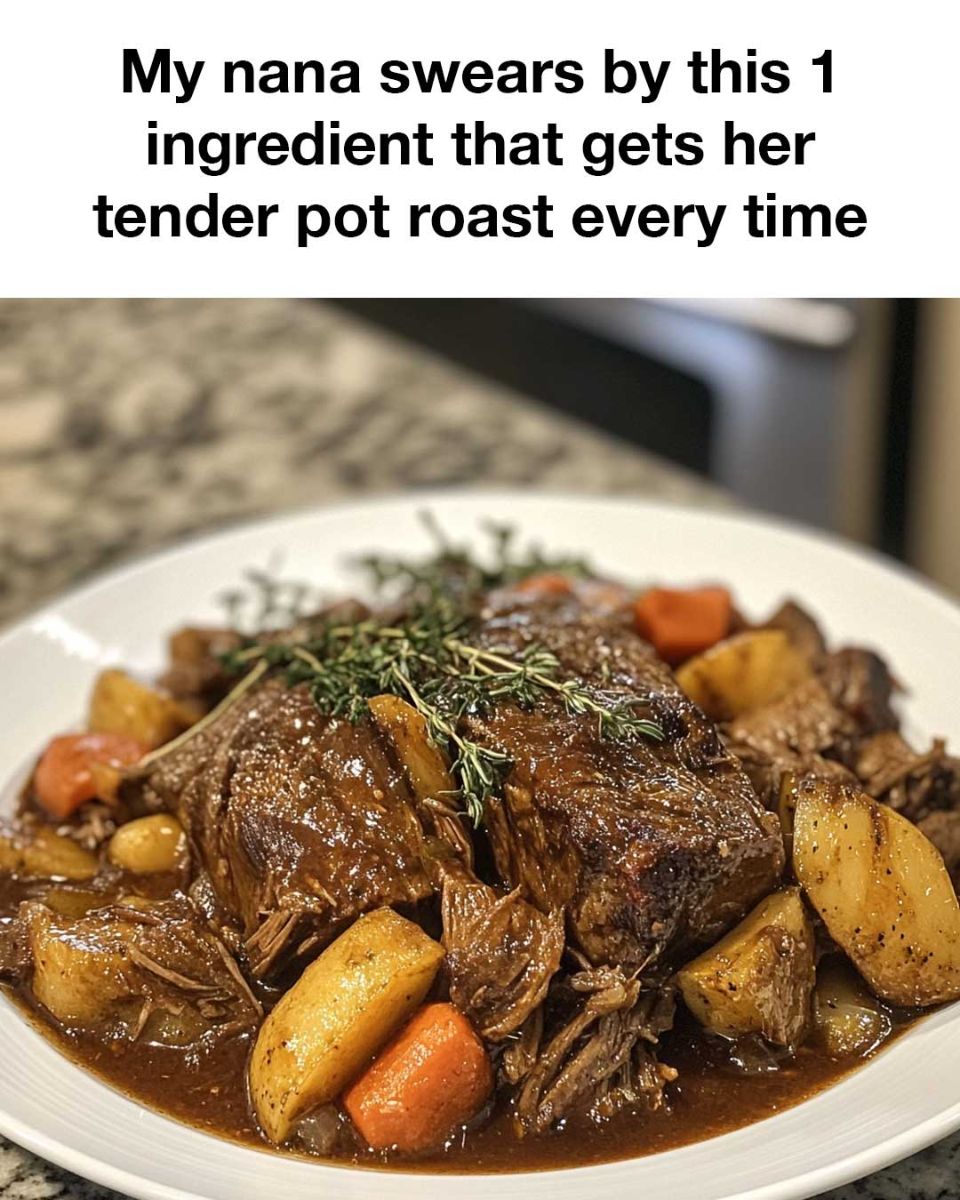There is nothing quite like the savory comfort of a pot roast, slowly cooked to perfection and meltingly tender. For generations, families have gathered around the dinner table to enjoy this classic dish, but achieving the perfect tenderness can sometimes feel like chasing a culinary secret. For my nana, however, it’s second nature. She attributes her consistently tender pot roast to one magical ingredient that she swears by and it has become a cherished family tradition.
The Importance of Tenderness in Pot Roast
Tenderness is the hallmark of a great pot roast, turning a simple cut of meat into a succulent dish that falls apart with a gentle nudge of a fork. The right level of tenderness is essential, not just for the texture, but for enhancing the flavors that combine during the slow cooking process. A pot roast that is tough or dry can ruin the dining experience, highlighting the need for a reliable method to achieve culinary perfection.
Advertisement
Discovering the Magic Ingredient
The secret ingredient that my nana uses is a bit unconventional but incredibly effective: soy sauce. It might surprise some, but soy sauce acts as both a tenderizer and a flavor enhancer. Its rich umami infusion complements the traditional seasonings while breaking down the tough fibers in the beef, resulting in a tender, flavorful pot roast each time.
How My Nana Came Across the Secret Ingredient
Nana’s discovery of soy sauce as her go-to ingredient for pot roast happened quite by chance. Many years ago, she was preparing for a family gathering and realized she was out of her usual marinade. In a pinch, she reached for a bottle of soy sauce, added it to her pot roast recipe, and waited anxiously. The results were astonishing, and the soy sauce secret was born. Since then, it's become a staple in her kitchen.
Step-by-Step Guide to Preparing the Perfect Pot Roast
To prepare my nana's pot roast, start with a quality cut of beef, such as a chuck roast. Season the meat with salt, pepper, and garlic powder. In a large pot, brown the roast on all sides in a bit of oil. Remove the meat and sauté onions and carrots in the drippings. Return the roast to the pot, add beef broth, and a generous splash of soy sauce. Cover and roast in the oven at 275°F for 3-4 hours, until the meat is fork-tender.
Understanding the Science Behind Tenderizing Meat
Soy sauce contains enzymes and amino acids that help break down proteins in meat, which is the key to achieving tenderness. The salt content also allows for deeper penetration into the meat, enhancing both flavor and texture. Additionally, the acid in the soy sauce helps to soften the connective tissues, making for a more tender bite.
Complementary Ingredients to Enhance Flavor
While soy sauce takes center stage in tenderizing, other ingredients can complement and enhance the flavor profile of the pot roast. Aromatics like garlic and onions, along with herbs such as rosemary and thyme, contribute depth and freshness. Adding a splash of red wine or balsamic vinegar can also provide a lovely complexity to the dish.
Common Mistakes to Avoid in Pot Roast Preparation
One common mistake is failing to brown the roast before slow cooking, which locks in flavors and creates a savory crust. Another is using too high a temperature, which can dry out the meat. Lastly, skipping the resting time after cooking can lead to loss of juices that are critical for maintaining moisture in the meat.
Personal Anecdotes and Family Traditions
Every family gathering at nana’s house marks a fond tradition of sharing stories and laughter over her famous pot roast. I remember her bustling around the kitchen, apron on, teaching us the art and patience of slow cooking. Her careful attention to the details of her recipe demonstrated her love and dedication to family and food alike.
Adapting the Recipe for Different Types of Meat
While beef is the traditional choice for pot roast, this recipe can easily be adapted for other meats such as pork shoulder or lamb. The principle of tenderizing with soy sauce remains the same, though adjustments in cooking time might be needed to suit the texture and thickness of the meat chosen.
Advertisement
Conclusion: Embracing the Art of Slow Cooking
In a fast-paced world, the art of slow cooking is a reminder to pause and relish the process of crafting a meal from start to finish. My nana’s special ingredient and her timeless recipe invite us to appreciate the flavors that develop with patience and care, bringing warmth to every meal shared with loved ones.

